The mechanism of DNA replication termination in vertebrates
- PMID: 26322582
- PMCID: PMC4575634
- DOI: 10.1038/nature14887
The mechanism of DNA replication termination in vertebrates
Abstract
Eukaryotic DNA replication terminates when replisomes from adjacent replication origins converge. Termination involves local completion of DNA synthesis, decatenation of daughter molecules and replisome disassembly. Termination has been difficult to study because termination events are generally asynchronous and sequence nonspecific. To overcome these challenges, we paused converging replisomes with a site-specific barrier in Xenopus egg extracts. Upon removal of the barrier, forks underwent synchronous and site-specific termination, allowing mechanistic dissection of this process. We show that DNA synthesis does not slow detectably as forks approach each other, and that leading strands pass each other unhindered before undergoing ligation to downstream lagging strands. Dissociation of the replicative CMG helicase (comprising CDC45, MCM2-7 and GINS) occurs only after the final ligation step, and is not required for completion of DNA synthesis, strongly suggesting that converging CMGs pass one another and dissociate from double-stranded DNA. This termination mechanism allows rapid completion of DNA synthesis while avoiding premature replisome disassembly.
Figures




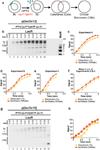



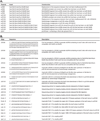
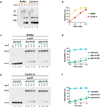


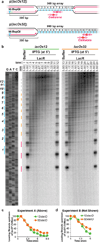
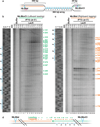

References
-
- Levine AJ, Kang HS, Billheimer FE. DNA replication in SV40 infected cells IAnalysis of replicating SV40 DNA. J. Mol. Biol. 1970;50:549–568. - PubMed
-
- Tapper DP, DePamphilis ML. Discontinuous DNA replication: Accumulation of simian virus 40 DNA at specific stages in its replication. J. Mol. Biol. 1978;120:401–422. - PubMed
-
- Sundin O, Varshavsky A. Terminal stages of SV40 DNA replication proceed via multiply intertwined catenated dimers. Cell. 1980;21:103–114. - PubMed
Publication types
MeSH terms
Substances
Grants and funding
LinkOut - more resources
Full Text Sources
Other Literature Sources
Miscellaneous

